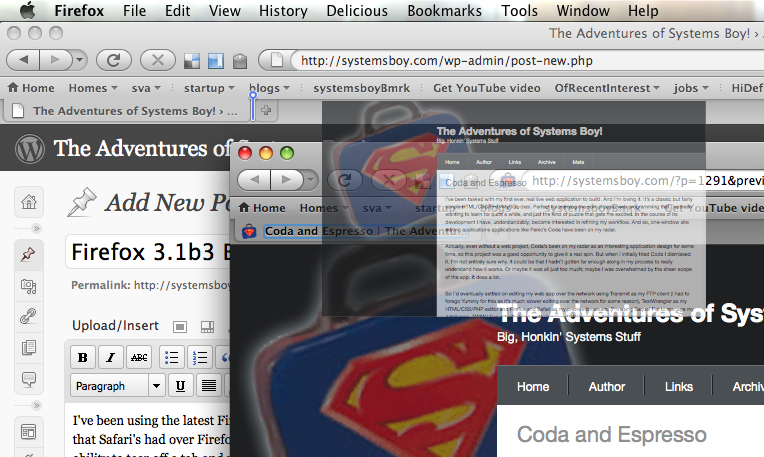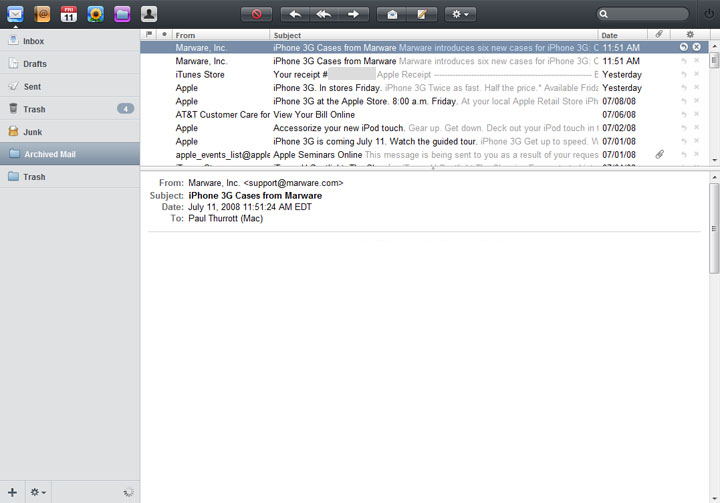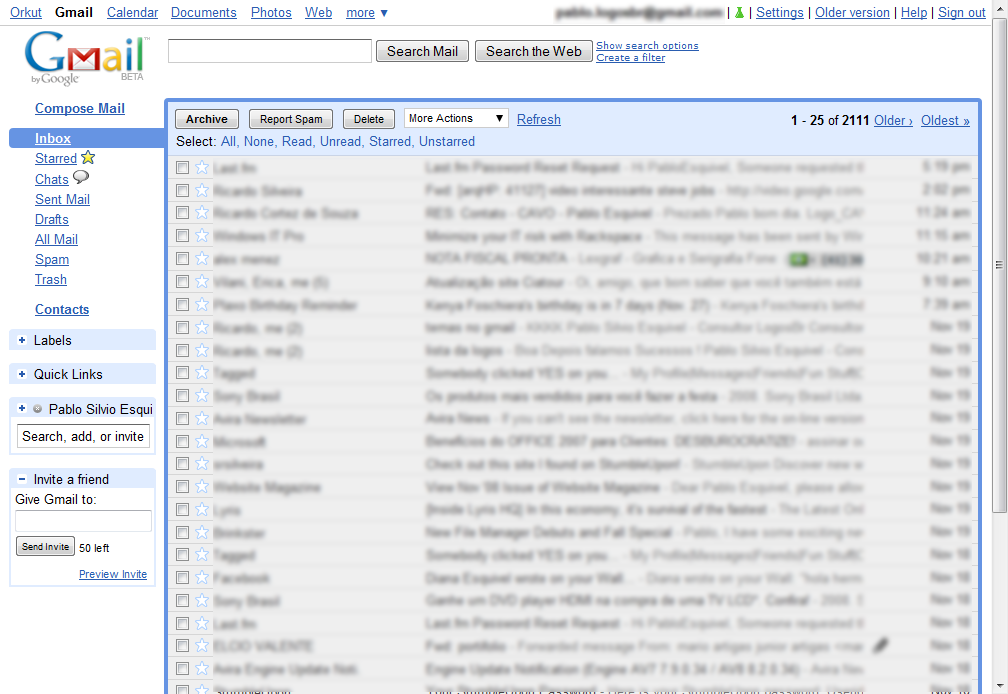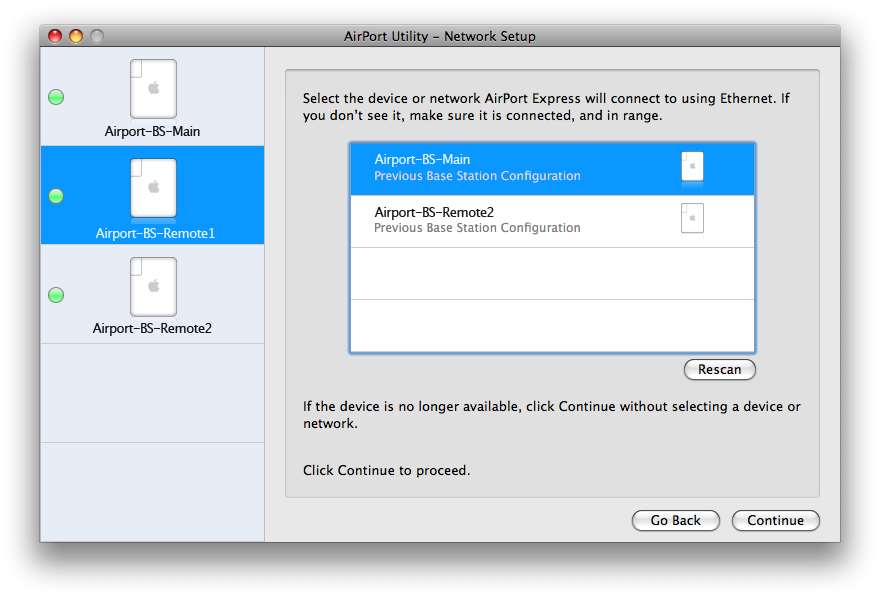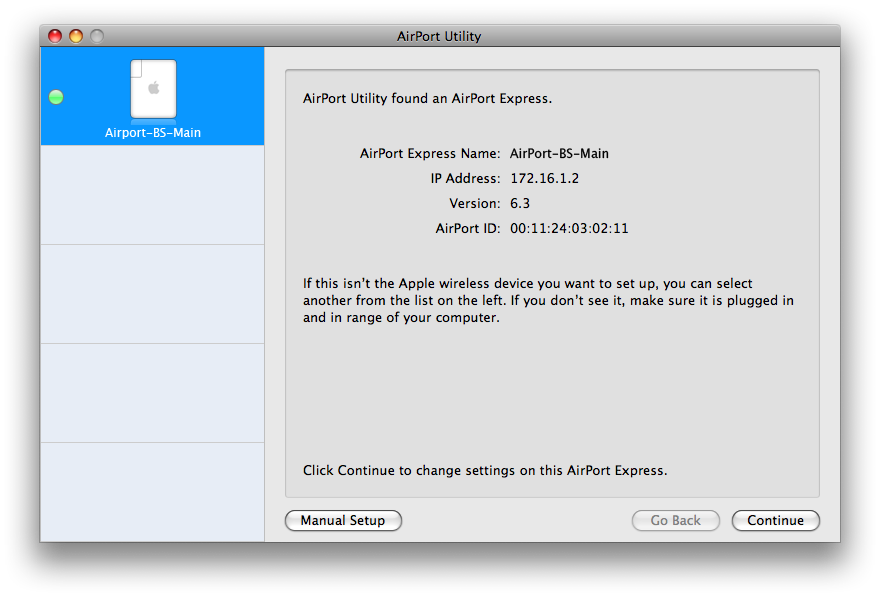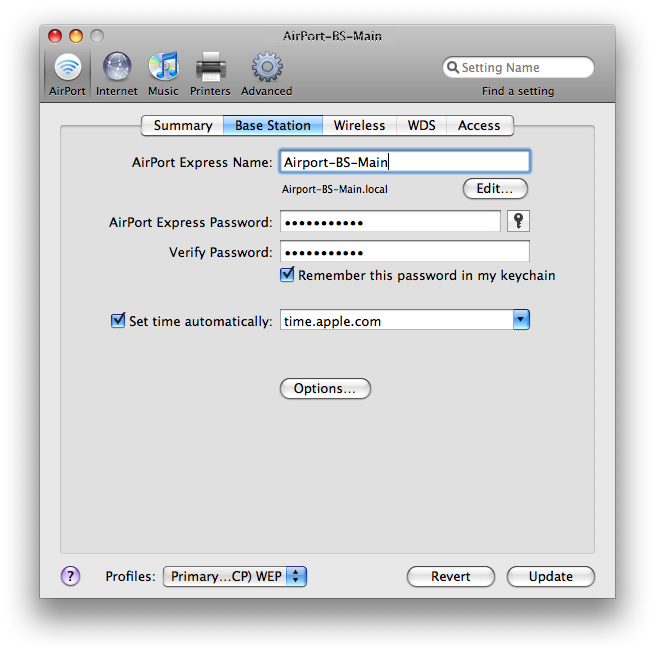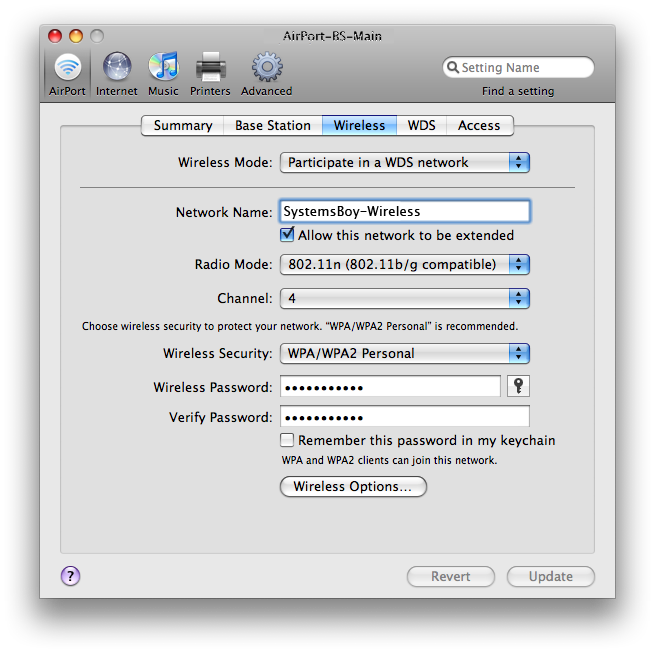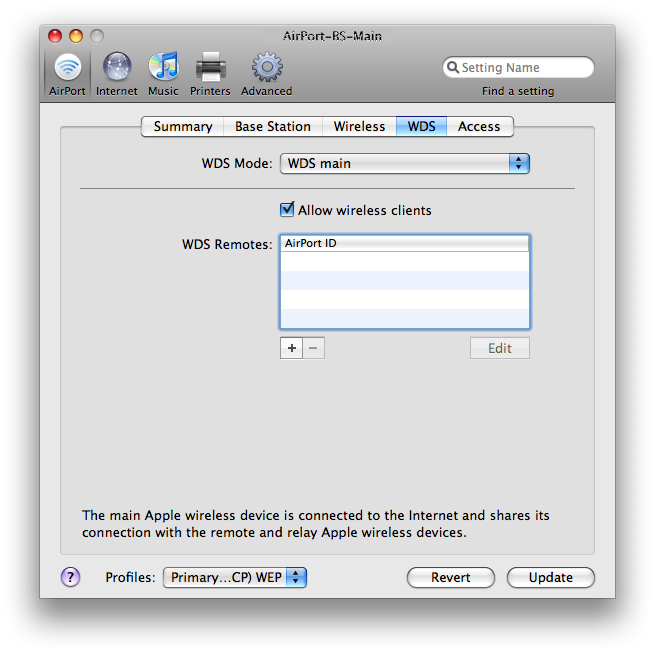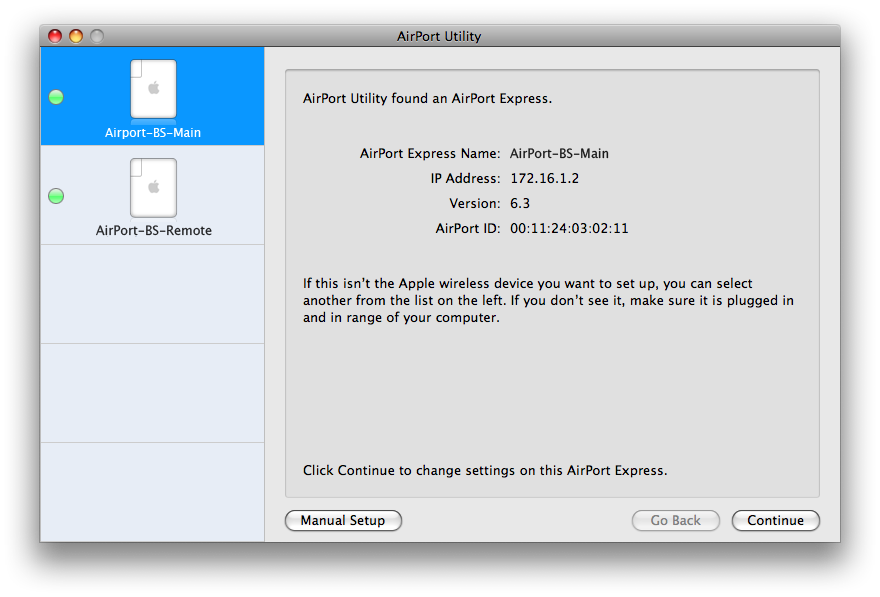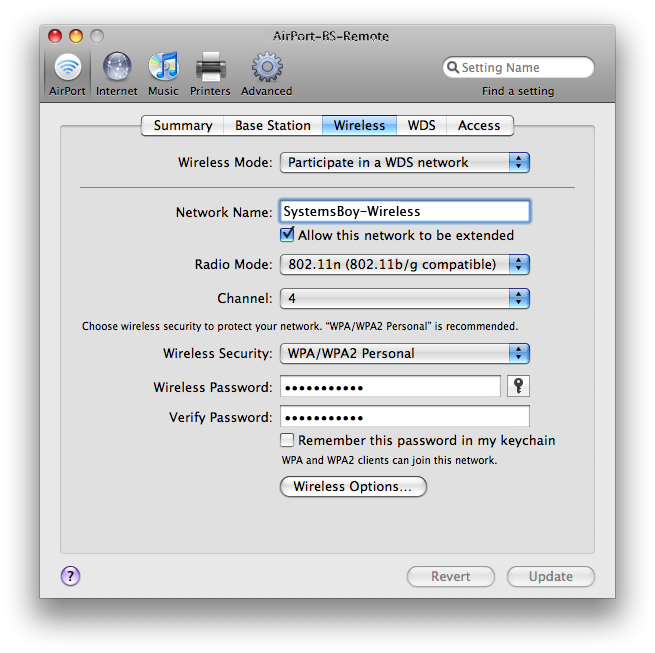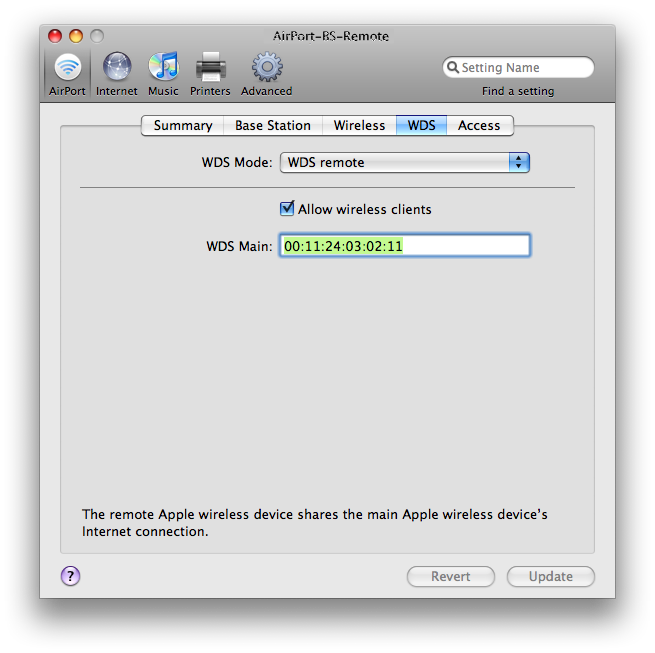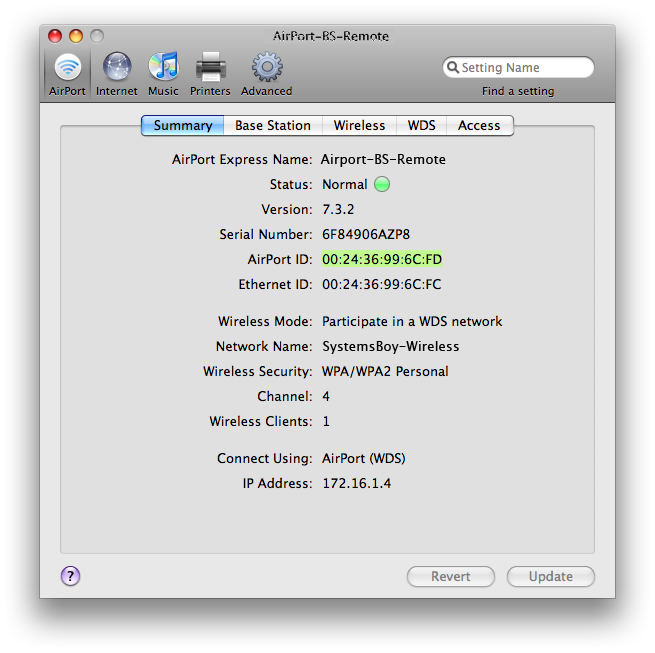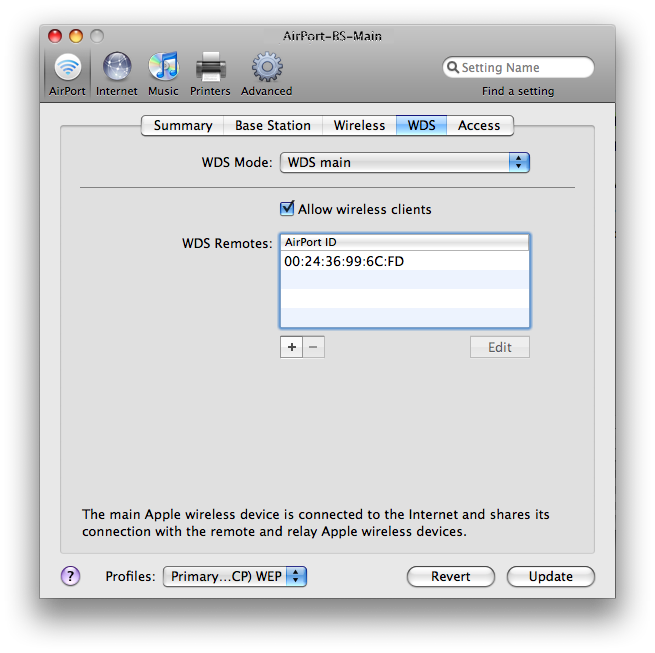As I mentioned a while back, I recently switched to a new web hosting provider, Media Temple. I wanted to provide a bit more detail as to why.

About a month-and-a-half ago I was uploading some new content to my personal site, which hosts a fair amount of video and audio for download, on my old web hosting provider, Web Hosting Buzz, when suddenly I was unable to connect to my site, either via FTP or the web. This had happened before, and I was starting to get concerned, so I decided to start a Live Chat session with tech support. After some poking around, the technician was able to determine that my site was available to everyone but me, the owner, and that my uploads had resulted in the blocking of my IP address. Seems they only allow a certain number of connections, and my FTP client (the venerable Yummy FTP) was set beyond their threshold. The tech person I was chatting with helpfully advised me to set the number of concurrent sessions to two or less. I set mine to one. He unblocked my IP address and all was again well with the universe.
Cut to the next day: Wash, rinse, repeat. Same problem, only this time the tech online told me that I was in violation of their acceptable usage policy, and directed me to the Disk Usage Provision section of that policy:
"90% or more of your content on your website must be linked from an HTML or similarly coded web page where all content is freely available to the public. Your website consists of web pages of a standard design, essentially HTML based text and graphics. Downloadable files, media, streaming content or any file which consumes more than 500kb of space must not exceed 10% of your total used disk quota." [Emphasis added]
Yikes!
This time the technician informed me that I had too many files that exceeded 500kb, and that I would need to remove all media that was in violation of this policy. Funny thing was, I'd been in violation for months. Why had no one informed me? Why was this suddenly a problem? I asked the tech. He said it had been their mistake, but that it was my fault for not having read the policy.
Ah, customer service! Ya gotta love it!
In fact, I had read the policy, but I'd kinda glossed over the whole, "You can't actually, feasibly use the total amount of disk space we claim to give you," part. I mean, really. Who would think that a company would offer you 1250GB of storage and then make it practically impossible to use said storage?
Call me naive.
So, after explaining to the technician that their "mistake" had cost me a great deal of time and effort, I asked him how I was to remove the content if my IP was still blocked. He told me he would unblock the IP for 24 hours if I promised to remove the files that violated the policy. During this conversation there was very much a sense that my site was being held hostage, so I didn't want to say anything, but it was at that point that I had decided to switch to a new web hosting provider as soon as I had a backup of my site in hand.
And by gum, that's just what I did.

I'm currently hosting this site, as well as a few others, on a Media Temple (gs) Grid-Service account. Media Temple is famed for their customer service, which is a big deal considering how rudely I was treated over at WHB. But I've yet to even need MT's customer service. This is mostly due to their phenomenal online KnowledgeBase, which has managed to answer my every question, and believe me, I've had some doozies. Uptime and speed have been acceptable; I've had decent speed — faster than WHB by a smidge perhaps — and only the occasional, short-lived drop-outs, which seems to be about par for the course with consumer-level services. But perhaps best of all, I can't even find MT's acceptable usage policy. They don't seem to place any restrictions on what you can do with your disk space. Sure, there are bandwidth and capacity limits, and the capacity limit is smaller than I had with WHB. But at least now I have a chance of actually hitting it.
It's only been a month. A little early, I realize, to fully endorse Media Temple. But so far, so good.
Today I canceled my Web Hosting Buzz account. Nothing like the taste of sweet, sweet consumer revenge. I just have to wonder, when will companies realize that consumers can and do exercise their freedom of choice? It just doesn't ever pay to treat customers — or, hell, let's call them what they are, people — like shit. There's little I take greater pleasure in than dumping a company that does so.
UPDATE:
Lots of great comments on this post so far. In particular, one reader points out that Media Temple does have a usage policy (I figured!) on their legal page (not in their support pages or KnowledgeBase, which is where I was looking). Of particular interest, said reader points to the following passage:
"75% of customer’s content files stored on Provider’s server must have associated HTML, or PHP files inside the account linking to the content stored on that account."
So, yes, there are some restrictions on the sorts of files that can be stored in your Media Temple account. But I understand this rule. It's there to prevent you from simply using the allotted disk space as storage. Media Temple wants you to use the space to serve websites, not as an online storage repository. Web Hosting Buzz has a similar clause in their policy. But, to be clear, the Web Hosting Buzz policy goes an additional step in limiting the size of the files I can put in my account to a measly 500kb, regardless of whether or not they are linked via HTML, PHP or the like. (For the record, 10% of your files can exceed this limit.) The way I read this is that you can only use your WHB account for serving basic HTML/PHP sites that use mainly text and/or image files, and not particularly large image files at that. And that'd be fine if it were clear from the start, in which case I never would have used them. But, while this policy is buried in an otherwise seemingly reasonable usage policy, WHB boastfully offers 1250GBs of storage on their main page. This is what you see most prominently when you sign up for their service. It's plastered all over their site. But when taking the usage policy into account, it becomes clear that that 1250GBs is pretty impossible to actually use; it would require hundreds of thousands of HTML and image files, more than even the largest websites use. A 1250GB quota suggests, to me anyway, that you can use this space to host decent sized media files like audio and video. But this is clearly not the case. So, yes, I find the offer of a virtually unreachable 1250GB quota misleading. Is WHB intentionally tricking people into purchasing their service in order to make a fast buck? I don't know. And it's very possible that I am misunderstanding something. But my experience certainly made me feel cheated. The second technician I dealt with was neither apologetic about the situation (which was referred to by said technician as a "mistake" on their part for not having caught the overage) nor helpful about a resolution to the problem. I was simply told to remove the problematic files (which would render my website essentially useless) or have my account suspended.
Emotions aside, ultimately the 500kb file size limit is, quite simply, a deal breaker for me. There's no way I can run my other sites with such a restriction in place. So, whether or not WHB is misleading folks, I have no choice but to make changes to my service. Had the WHB tech been a bit more helpful about the situation, a bit more symapthetic, I might have considered upgrading my WHB service to one that could accomodate my needs. Unfortunatley, that's not how things played out.
Thankfully, Media Temple does not seem to have the same sort of restrictions in their usage policy (and, in what is probably a good sign, they do not offer nearly as much disk space, though it's certainly more than enough). But, as I said, the jury's still out. And I'll take, as always, a wait-and-see approach. If I encounter problems, I will take my business elsewhere. But I'm hopeful that, at least for a while, I've found a new home in Media Temple.
UPDATE 2:
I've edited the post for clarity.


